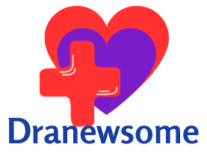A mental illness is indicated by a behaviour, emotion regulation, or thought clinically serious process disturbance. It is typically associated with distress or deficits in important areas of performance. There are numerous varieties of mental illnesses. The latter is a more general phrase that encompasses psychosocial disabilities, mental disorders, and (other) mental states linked to substantial distress, functional impairment, or self-harm risk. The International Classification of Diseases, 11th Revision (ICD-11), is the primary source of information used in this fact sheet regarding mental disorders.
The COVID-19 pandemic played a major role in the sharp rise in the number of people with anxiety and depressive disorders in 2020. According to preliminary forecasts, anxiety and major depressive disorders would rise by 26% and 28%, respectively, in just a single year. Even while there are options for effective prevention and therapy, most people who suffer from mental problems lack access to quality care.
Additionally, a lot of people deal with discrimination, stigma, and human rights violations in mental disorders.
Table Of Contents
Anxiety Disorders-
Excessive worry and fear, as well as associated behavioural abnormalities, are hallmarks of anxiety disorders. The severity of the symptoms is such that they cause substantial anguish or functional impairment. Anxiety disorders can take many different forms. These include separation anxiety disorder, which is characterized by excessive fear or anxiety about being away from people with whom the sufferer has a deep emotional bond, generalized anxiety disorder, which is characterized by excessive worry, panic disorder, which is characterized by panic attacks, and others. There is proven psychological treatment available, and medication may also be taken into consideration based on the patient’s age and severity.
Depression-
280 million individuals, including 23 million children and adolescents, suffered from depression in 2019. Mood swings and transient emotional reactions to day-to-day obstacles are not the same as depression. A depressive episode lasts at least two weeks and is characterized by the person experiencing a depressed mood (feeling hopeless, agitated, and empty) or a loss of enjoyment. Many additional symptoms may also be present, such as difficulty concentrating, feelings of extreme guilt or low self-worth, hopelessness regarding the future, suicidal thoughts, disturbed sleep, changes in eating or weight, as well as extremely low energy or depression. Depression increases a person’s chance of suicide.
Bipolar Disorder-
40 million persons worldwide suffered from bipolar illness in 2019. Bipolar disorder patients alternate between manic symptoms and depressed spells. A depressive episode occurs when a person feels down for the majority of the day, almost every day, or they lose interest in or enjoyment from activities. Manic symptoms might include pleasure or annoyance, increased activity or energy, and other symptoms including talkativeness, racing thoughts, self-esteem elevation, decreased tiredness, distractibility, and dangerous, impulsive actions also include. Bipolar disorder patients have a higher risk of suicide. However, there are successful therapy options, such as medication, stress reduction, social functioning enhancement, and psychoeducation.
Post-Traumatic Stress Disorder (PTSD)-
In environments where there is conflict, there is a high prevalence of PTSD and other mental illnesses. After being exposed to a terrifying event, or series of events, PTSD may develop.
It exhibits each of the following traits:
1) Going through the traumatic incident or events again in the present (intrusive memories, flashbacks, or nightmares);
2) Ignoring thoughts and recollections of the event or events; Avoiding people, places, or activities that bring up the memory of the event or events
3) enduring beliefs that the present threat is greater than it. These symptoms significantly hinder functioning and last for at least a few weeks. There are psychological treatments that work.
Eating Disorders-
Anorexia nervosa and bulimia nervosa are two examples of eating disorders that are characterized by aberrant eating patterns, obsession with food, and significant body image and weight issues. major risk or harm to one’s health, major distress, or severe functional impairment are the outcomes of the symptoms or behaviours. Anorexia nervosa is linked to early mortality via suicide or medical issues, and it typically manifests during adolescence or early adulthood. Bulimia nervosa sufferers have a markedly higher risk of substance abuse, suicidal thoughts, and medical issues. There are effective treatment methods available, such as cognitive-based therapy and family-based treatment.
Neurodevelopmental Disorders-
Behavioural and cognitive disorders known as neurodevelopmental disorders are those that appear during the developing stage and are characterized by severe challenges to the acquisition and performance of particular intellectual, motor, linguistic, or social functions.
Attention deficit hyperactivity disorder (ADHD), autism spectrum disorder, and abnormalities of intellectual development are examples of neurodevelopmental disorders. A chronic pattern of inattention and/or hyperactivity-impulsivity that negatively affects social, professional, or academic functioning is what defines ADHD. Significant impairments in intellectual functioning and adaptive behaviour—a term referring to challenges with ordinary conceptual, social, and practical skills—are hallmarks of intellectual development disorders.

